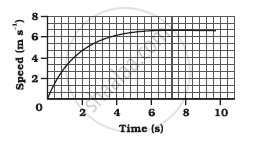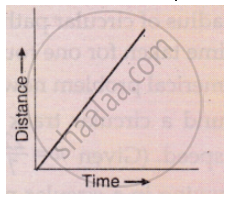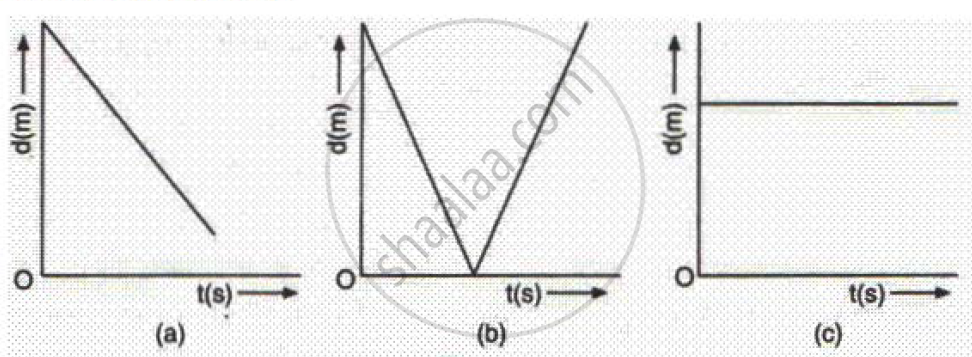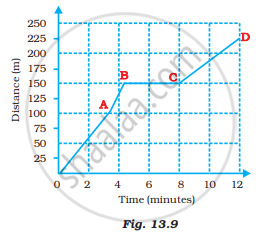Advertisements
Advertisements
Question
A body moves along a straight road with a speed of 20 m/s and has a uniform acceleration of 5 m/s2. What will be its speed after 2 s?
Solution
Initial velocity u = 20 m/s.
Acceleration = 5 m/s2.
T = 2 s.
We know v= u + at.
v= 20 + 5X2= 30 m/s.
APPEARS IN
RELATED QUESTIONS
What can you say about the motion of an object if its speed-time graph is a straight line parallel to the time axis?
The speed-time graph for a car is shown in the following figure:

- Find how far the car travels in the first 4 seconds. Shade the area on the graph that represents the distance travelled by the car during the period.
- Which part of the graph represents uniform motion of the car?
What conclusion can you draw about the speed of a body from the following distance-time graph ?

Fill in the following blank with suitable word :
The slope of a distance-time graph indicates ………………….. of a moving body.
Name the two quantities, the slope of whose graph give speed .
A spaceship is moving in space with a velocity of 60 kms−1. It fires its retro engines for 20 seconds and velocity is reduced to 55 kms−1. Calculate the distance travelled by a spaceship in 40 s, from the time of firing of the retro- rockets.
Write down the type of motion of a body in each of the following distance time-graph.
If we denote speed by S, the distance by D and time by T, the relationship between these quantities is
Boojho goes to the football ground to play football. The distance-time graph of his journey from his home to the ground is given in Figure 13.9.

(a) What does the graph between points B and C indicate about the motion of Boojho?
(b) Is the motion between 0 to 4 minutes uniform or nonuniform?
(c) What is his speed between 8 and 12 minutes of his journey?
The area under velocity time graph represents ______.
